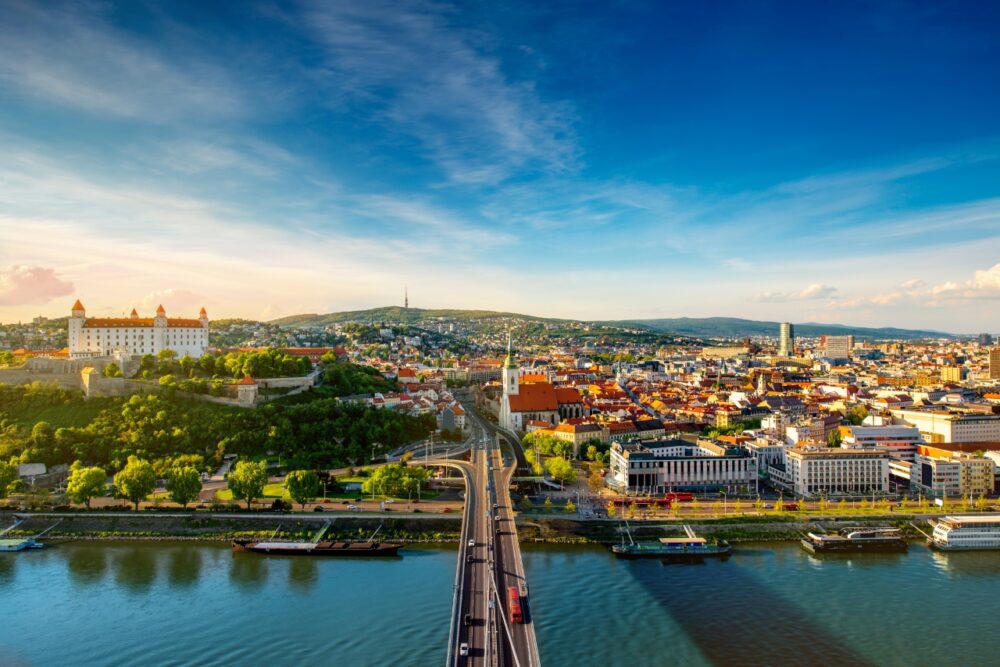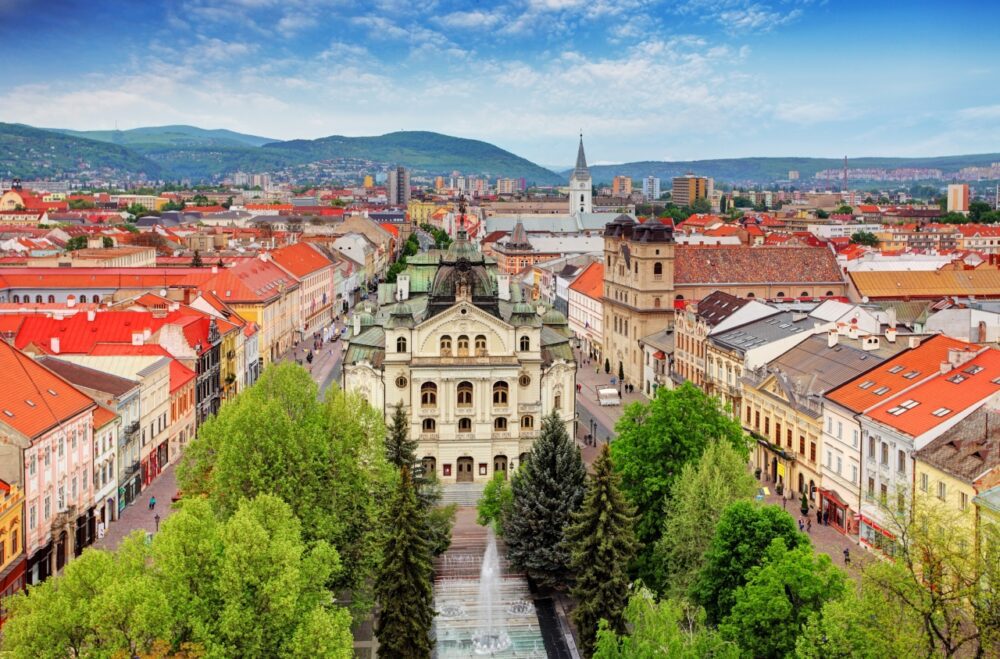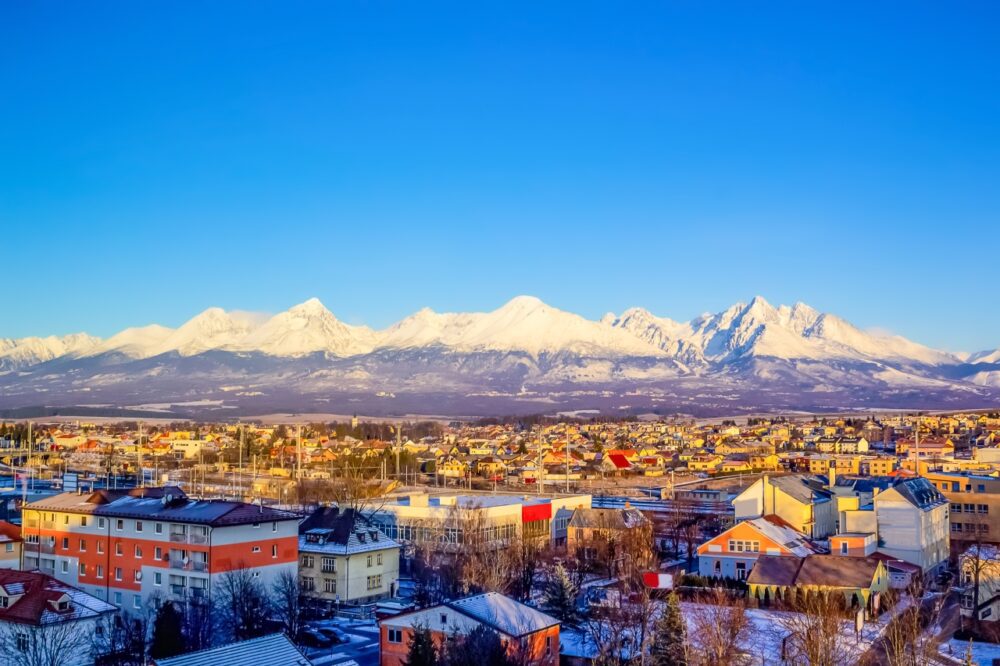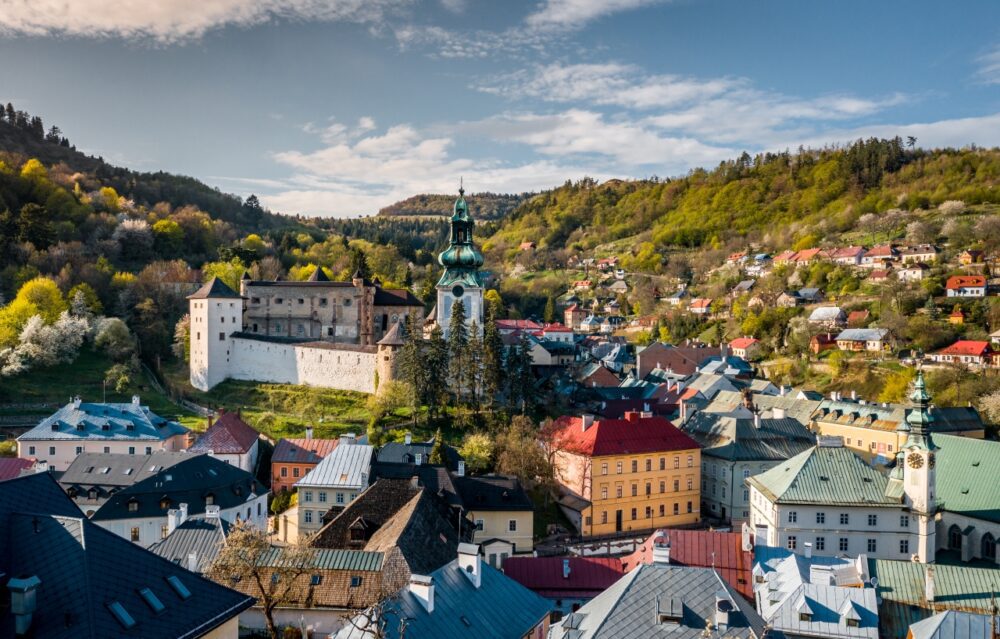
Introduction
Slovakia might be one of Europe’s most underrated destinations, but for those who venture here, it’s a place full of surprises. Nestled in the heart of Central Europe, Slovakia is a country rich in history, with a landscape that boasts rugged mountains, medieval castles, charming towns, and natural wonders like caves and thermal springs. Whether you’re hiking in the High Tatras, wandering the old streets of Bratislava, or relaxing in one of the country’s famous spa towns, Slovakia offers a unique blend of adventure, culture, and tranquillity.
The first time I visited Slovakia, I was struck by its quiet beauty. Compared to some of its more famous neighbours, Slovakia feels refreshingly untouched by mass tourism. It’s a place where you can still find medieval towns without the crowds and hike for hours in nature without bumping into another soul. The mix of history, outdoor activities, and friendly locals makes Slovakia a hidden gem in the heart of Europe. Here’s why you should put Slovakia on your travel list.
Table of Contents
Reasons You Should Visit Slovakia
1. A Haven for Outdoor Enthusiasts
If you love the outdoors, Slovakia is paradise. The High Tatras are the most iconic mountain range in the country, with towering peaks, alpine lakes, and hiking trails that offer stunning views. I spent a few days hiking around Strbske Pleso, a beautiful glacial lake in the Tatras, and the scenery was nothing short of breathtaking. The mountains are also home to some excellent skiing resorts in winter, making Slovakia a year-round destination for nature lovers.
But the Tatras are just the beginning. Slovakia has nine national parks, each offering unique landscapes. Slovak Paradise National Park, for example, is full of gorges, waterfalls, and ladders that take you through wild, dramatic terrain. For a completely different experience, I recommend visiting the Slovak Karst, a UNESCO World Heritage site known for its vast underground cave systems. Whether you’re hiking, skiing, or exploring caves, Slovakia’s natural beauty is second to none.
2. Rich History and Medieval Castles
Slovakia is home to an astonishing number of castles—over 100 to be exact—and many of them look like they’ve been pulled straight from a fairy tale. Bratislava Castle, perched on a hill overlooking the capital, is one of the most iconic, and wandering through its grand halls gives you a real sense of the country’s royal past. Just a short drive from the city, Devin Castle is another must-see, offering panoramic views over the Danube and Morava rivers.
Further into the countryside, you’ll find Spis Castle, one of the largest castle ruins in Europe and a UNESCO World Heritage site. Walking through the ruins, with the mountains rising in the background, feels like stepping back in time. Slovakia’s castles aren’t just for history buffs—they’re incredibly picturesque and make for a perfect day trip from any major city.
3. Charming Medieval Towns
Slovakia’s cities and towns are full of charm and history, often overlooked by travellers to Central Europe. Bratislava is a beautiful mix of medieval and modern, with a compact old town filled with winding streets, quirky statues, and vibrant cafés. The Bratislava Christmas Market, held in the main square, is one of the cosiest and least crowded in Europe, perfect for soaking up the festive atmosphere with a hot glass of mulled wine.
But to get a real taste of Slovakia’s history, head to Banska Stiavnica, a UNESCO-listed town that’s steeped in mining history. I loved wandering through its narrow streets, lined with pastel-coloured buildings, and exploring the town’s old mining shafts and museums. Levoca and Kezmarok are also well worth visiting for their beautiful wooden churches and medieval squares. Slovakia’s small towns offer an authentic experience that’s both relaxed and deeply rooted in tradition.
4. Relaxing Spa Culture
Slovakia has a long history of wellness and relaxation, and the country is dotted with natural thermal springs and health resorts. One of the most famous is Piestany, where I spent a blissful afternoon soaking in the warm mineral-rich waters. Known for its mud baths and healing treatments, Piestany has been attracting visitors for centuries, and today it’s one of the best places to unwind after a few days of exploring Slovakia’s mountains and cities.
For a more unique experience, head to Bardejov Spa, located in a quiet corner of the country. The town itself is charming, but the real highlight is the spa, where you can relax in thermal pools that have been used for healing since the 13th century. Slovakia’s spa culture is a perfect way to recharge your batteries and experience a different side of the country.
5. Affordable and Undiscovered
One of the best things about travelling in Slovakia is how affordable it is. Compared to Western Europe, you’ll find that your money goes much further here. Whether you’re enjoying a meal in a local restaurant, staying in a guesthouse, or taking a train between cities, everything is incredibly good value. I was pleasantly surprised by how cheap the food and drink were, especially considering the quality.
Slovakia is also refreshingly free of mass tourism. Even in popular destinations like Bratislava or the High Tatras, you’ll find fewer crowds than in neighbouring Austria or the Czech Republic. This gives the country an unspoiled charm and makes it easy to explore at your own pace. If you’re looking for a destination that offers great value for money and a more authentic, off-the-beaten-path experience, Slovakia is hard to beat.
Best Places to Visit in Slovakia
1. Bratislava

Bratislava, Slovakia’s capital, is a city that often gets overshadowed by nearby Vienna or Budapest, but it has its own unique charm. The old town is compact and perfect for wandering, with highlights like St. Martin’s Cathedral and Michael’s Gate, the last remaining medieval gate of the city. I loved the quirky statues dotted around the city, like the famous Cumil peeking out from a manhole cover.
A visit to Bratislava Castle is a must, if only for the views over the Danube and the city below. From here, you can easily walk to Devin Castle, just a short bus ride away, where the rivers Danube and Morava meet. If you’re a foodie, Bratislava’s café culture is thriving, and the local wine scene is surprisingly good—make sure to try a glass of Frankovka Modra from the nearby Small Carpathians wine region.
2. Kosice

Kosice is Slovakia’s second-largest city, but it has a relaxed, laid-back vibe that makes it feel much smaller. The heart of the city is Hlavna Street, one of the most beautiful pedestrianised streets in Slovakia, lined with colourful buildings and lively squares. At its centre is St. Elisabeth Cathedral, the largest Gothic cathedral in Slovakia, where I spent some time admiring its stunning stained-glass windows and intricate details.
One of my favourite experiences in Kosice was visiting Spis Castle, located just outside the city. It’s one of the largest castle ruins in Europe, and exploring its sprawling grounds was like stepping back in time. Kosice is also known for its vibrant arts scene, with plenty of galleries and cultural events, including the annual White Night festival, when the city’s streets are transformed by art installations and performances.
3. Presov
Presov is a charming city in eastern Slovakia, known for its Baroque architecture and relaxed atmosphere. I spent a peaceful afternoon wandering through the Main Square, lined with colourful buildings, cafés, and churches. St. Nicholas Cathedral is the city’s main landmark, and climbing the tower gave me a great view over the red-tiled rooftops.
Presov is also close to Slovak Paradise National Park, making it a great base for nature lovers. The park is famous for its dramatic gorges, waterfalls, and hiking trails. One of the most popular hikes is the Sucha Bela Gorge, where you climb through ladders and cross narrow wooden bridges, surrounded by wild, untouched nature. If you enjoy the outdoors, Presov offers the perfect mix of city life and access to Slovakia’s natural beauty.
4. Zilina
Zilina is often overlooked by travellers, but this northern Slovakian city is well worth a visit. The city’s Marianske Square is a lovely place to relax, with its Renaissance-style arcades and vibrant atmosphere. Just outside Zilina is Strecno Castle, a medieval fortress perched high on a cliff overlooking the Vah River. The views from the top are spectacular, and the castle’s exhibits give a fascinating glimpse into Slovak history.
Zilina is also a great base for exploring the Mala Fatra National Park, which offers fantastic hiking trails through lush forests and dramatic peaks. One of the highlights is the Janosikove Diery gorge, where you can hike through narrow canyons and over waterfalls—a real adventure for nature lovers.
5. Banska Bystrica
Banska Bystrica is a city with a rich mining history, located in the heart of Slovakia. The city’s SNP Square is a mix of medieval and Renaissance architecture, with plenty of cafés and restaurants to relax in after a day of exploring. The Museum of the Slovak National Uprising is a must-visit for history buffs, offering a detailed account of Slovakia’s role in World War II.
One of my favourite experiences in Banska Bystrica was taking a trip to Donovaly, a nearby ski resort that’s perfect for outdoor activities year-round. In winter, it’s a popular spot for skiing and snowboarding, while in summer, the hiking and mountain biking trails offer stunning views of the surrounding hills.
6. Nitra
Nitra is one of Slovakia’s oldest cities, and it has a rich cultural and religious history. Nitra Castle, perched on a hill overlooking the city, offers beautiful views and a glimpse into Slovakia’s past. Walking through the castle grounds and visiting St. Emmeram’s Cathedral was a highlight of my visit to the city.
Nitra is also known for its lively university scene, and the city’s streets are full of cafés, bars, and shops. The Botanical Garden at the local university is a peaceful spot to relax and enjoy a walk. If you’re looking for a quieter, less touristy destination with plenty of history, Nitra is a great choice.
7. Trnava
Often referred to as “Slovakia’s Rome,” Trnava is a small but historically significant city filled with beautiful churches and religious monuments. The St. John the Baptist Cathedral is one of the most impressive, with its baroque interior and soaring ceilings. Trnava’s old town is compact and charming, perfect for a leisurely walk through its streets lined with Renaissance and Baroque buildings.
One of my favourite experiences in Trnava was enjoying a glass of wine in one of the local wine cellars. The region is known for its vineyards, and a wine-tasting tour is a great way to sample some of the local flavours. Trnava’s relaxed vibe, combined with its rich religious history, makes it a peaceful stop on any trip through Slovakia.
8. Poprad

Poprad is the gateway to the High Tatras, and it’s the perfect base for outdoor adventures. I stayed in Poprad while exploring the nearby Tatras, and the town itself has a laid-back vibe, with plenty of restaurants and shops to stock up on hiking supplies. The AquaCity Poprad, a large thermal water park, was a great place to relax after a day of hiking—soaking in the warm pools with views of the mountains was the perfect end to a long day.
If you’re visiting the Tatras in winter, Poprad is also close to several ski resorts, including Tatranska Lomnica, one of the best places for skiing in Slovakia. Whether you’re here for the summer hikes or winter sports, Poprad is an ideal base for exploring Slovakia’s most dramatic landscapes.
9. Banska Stiavnica

Banska Stiavnica is one of the most beautiful and historically significant towns in Slovakia. Once a booming mining town, it’s now a UNESCO World Heritage site with well-preserved medieval architecture and a picturesque setting. I loved wandering through the town’s narrow streets, exploring the old mining tunnels, and visiting the Holy Trinity Square, which is the heart of the town.
One of the highlights of my visit was the New Castle, which offers fantastic views over the town and surrounding hills. Banska Stiavnica is also home to several quirky museums, including a mining museum where you can descend into an old mine shaft. If you’re looking for a town that combines history with natural beauty, Banska Stiavnica is a must-see.
10. Piestany
Piestany is Slovakia’s most famous spa town, known for its healing thermal waters and mud treatments. I spent a relaxing day at the Piestany Spa, soaking in the mineral-rich pools and indulging in a mud bath. The town itself is quiet and peaceful, with tree-lined streets and beautiful parks, perfect for a leisurely stroll.
If you’re in need of some relaxation, Piestany is the place to be. The spa treatments are known for their therapeutic effects, and the town’s calm atmosphere makes it the perfect spot to unwind after a few days of exploring Slovakia’s more energetic destinations.
Travel Tips for Slovakia
Getting Around Slovakia
Slovakia has an efficient public transport system, with trains and buses connecting major cities like Bratislava, Košice, and Žilina. Trains are comfortable and ideal for long-distance travel, while buses reach smaller towns and rural areas. In cities, trams and buses are reliable, and you can use taxis or ride-hailing apps like Bolt for short trips. Renting a car is a good option for exploring the Tatra Mountains or more remote areas, but be prepared for narrow roads in the countryside.
Best Time to Visit Slovakia
The best time to visit Slovakia depends on your interests. Summer (June to August) is perfect for hiking in the High Tatras, with warm weather and clear trails. Spring (April to June) and autumn (September to October) offer mild temperatures, fewer tourists, and colourful landscapes, ideal for sightseeing in cities like Bratislava or exploring Slovakia’s national parks. Winter (December to February) is cold, but it’s the best time for skiing in resorts like Jasná and enjoying cosy mountain lodges.
Passport and Visa Requirements for Slovakia
Slovakia is part of the Schengen Area, so travellers from EU/EEA countries can enter with just an ID card. Visitors from countries like the US, UK, Canada, and Australia can stay visa-free for up to 90 days within the Schengen Zone. Make sure your passport is valid for at least three months beyond your stay. Slovakia shares open borders with its neighbours, so if you’re planning to visit Austria, Hungary, or Czech Republic, border crossings are hassle-free.
Currency and Banks in Slovakia
Slovakia uses the Euro (EUR), and ATMs are widely available in cities and towns. Credit and debit cards are accepted in most places, but it’s a good idea to carry some cash for smaller purchases, particularly in rural areas or local markets. Be cautious of exchange offices at airports, which often have poor rates—using ATMs or exchanging money at a bank is usually the better option. Tipping is appreciated but not mandatory, with 5-10% being typical in restaurants.
Language and Useful Phrases to Know
The official language in Slovakia is Slovak, and while English is widely spoken in tourist areas and by younger people, learning a few basic Slovak phrases will go a long way. Try “Dobrý deň” (good day), “Ďakujem” (thank you), and “Prosím” (please). In smaller towns and rural regions, English is less common, so knowing some Slovak or having a translation app handy will make interactions smoother and more enjoyable.
Budgeting and Costs for Slovakia
Slovakia is a relatively affordable destination, especially compared to Western Europe. Accommodation, food, and transport are budget-friendly, particularly in cities like Bratislava and Košice. Eating at local kolibas (traditional Slovak restaurants) offers excellent value, with hearty dishes like bryndzové halušky (potato dumplings with sheep cheese). Public transport is cheap, and many of Slovakia’s best attractions—like hiking trails and historic towns—are free to explore. To save even more, consider travelling in the shoulder seasons (spring or autumn) when prices are lower and crowds are thinner.
Conclusion
Slovakia is a country that offers a perfect blend of history, culture, and outdoor adventure. Whether you’re hiking through the stunning High Tatras, exploring the medieval streets of Bratislava or Banska Stiavnica, or relaxing in the thermal baths of Piestany, Slovakia has something for every type of traveller.
What I love most about Slovakia is how it remains off the beaten path, allowing visitors to experience its beauty without the crowds. The combination of stunning natural landscapes, rich history, friendly locals, and affordable prices makes Slovakia a must-visit destination in Central Europe. If you’re looking for a destination that’s as surprising as it is beautiful, you won’t regret putting Slovakia on your travel list.
